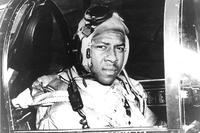The head of naval aviation told Congress on Thursday that ongoing aviation troubles, with high operational tempo and limited funding, continue to tax the service and force cuts to operations back home.
In prepared remarks for the House Armed Services Committee, Vice Adm. Troy Shoemaker testified that some carrier air wings have already cut maintenance back from two shifts to one due to lack of manning amid constant deployments.
He said the force continues to feel the effects of the 2011 Budget Control Act, which put limits on defense spending, effective for 10 years.
"We've been forced to take risks in maintenance and production and, as a result, our ability to fix and produce up aircraft and therefore train aviators has suffered," Shoemaker said in his remarks.
The Navy has been hit hard, he said, as naval presence has been increasingly required across the world.
In 2017, the service deployed four carrier strike groups around the world, he wrote. Currently, there are seven carriers underway, three in the Western Pacific.
But doing that means robbing non-deployed planes, Shoemaker said.
"Consistent with the Navy's policy of supporting deployed and next-to-deploy forces, we were forced to cannibalize aircraft, parts and people to ensure those leaving on deployment had what they needed to be safe and effective while operating forward," he said. "To continue to provide credible maritime forces around the world, we've made sacrifices at home."
To aid the strike fighter community, which Shoemaker said has been hardest hit by readiness shortfalls, the Navy has established a "Rhino Readiness Recovery" team to highlight and tackle the impacts of underfunding and maintenance needs.
As of October, Shoemaker said, only half of all Navy F/A-18 Super Hornets were flyable, and only 31 percent were fully ready to fight and deploy.
It was first reported in February that the Navy's Hornet community was in dire straits. At the time, 62 percent of all F/A-18s were not flyable due to spares shortages and other problems.
"The readiness level for [the Super Hornet] community has been on a declining trend for the last few years," Shoemaker said in his prepared testimony.
He said the readiness recovery team is bringing together naval subject matter experts from across the service and teaming them with experienced industry partners.
But while the Navy works to leverage expertise, Shoemaker called on Congress to fund the service's efforts to repair itself in a predictable way.
"We will use the lessons learned from the strike fighter community to enhance our ability to repair aircraft, predict future challenges across the aviation force, and support the warfighter in each of our aviation communities," he said.
"Key to the success of this effort is consistent, healthy levels of aviation readiness account funding across the Future Years Defense Plan, to include investment in our aging infrastructure and needed support equipment replacement," he continued.










